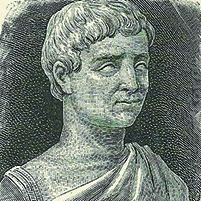IL CIRCOLO VIRTUOSO: SCIPIONE EMILIANO E I SUOI AMICI NELL’IMMAGINE DI CICERONE
DOI:
https://doi.org/10.4081/lettere.2020.758Abstract
The image transmitted by Cicero especially in the De re publica and in the Laelius de amicitia has fueled the traditional thesis on the so-called ‘scipionic circle’: philhellenism, with more specific reference to the names of Polybius and Panaetius, would have had a profound impact in Rome already from the middle of the second century B.C. on the customs, ideals and philosophical vocation of the group of aristocrats who gather around the charismatic figure of Scipio Aemilianus. However, more recent studies have strongly questioned whether the cultural process activated by the encounter with Greek thought could have already evolved a century before Cicero, within a ruling class that still too much resembles the Horatian ferus victor; and also Cicero in other works represents the main figures of that group in a less idealized way on a cultural level, starting with Scipio himself and his friend Laelius.
Downloads


